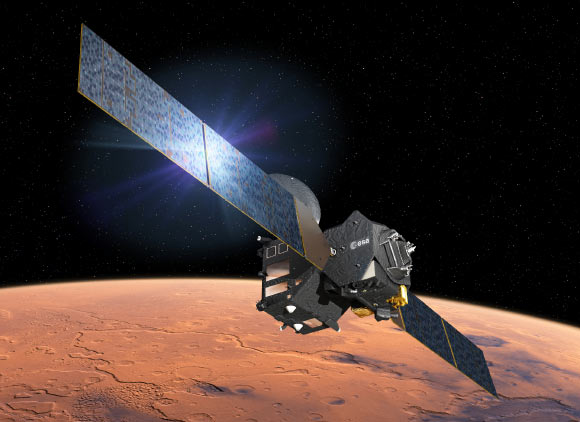ESA’s ExoMars Trace Gas Orbiter (TGO) has entered an elliptical orbit around Mars, while contact has not yet been confirmed with the Schiaparelli lander.
TGO’s Mars orbit insertion burn — the long (134 min) engine firing — lasted from 9:05 a.m. to 11:24 a.m. EDT (6:05 a.m. – 8:24 a.m. PDT, 1:05 p.m. – 3:24 p.m. GMT) on October 19, reducing the spacecraft’s speed and direction by more than 3,350 mph (1.5 km/s).
The orbiter is now on its planned orbit around the Red Planet and mission controllers at the European Space Operations Centre (ESOC) continue to monitor its health.
The ESOC specialists are trying to confirm contact with the Schiaparelli module, which entered the Martian atmosphere some 107 minutes after TGO started its own orbit insertion maneuver.
The lander was released by TGO on October 16. It was programmed to perform an automated landing sequence, with parachute deployment and front heat shield release between 7 and 4.3 miles (11 – 7 km), followed by a retrorocket braking starting at 0.7 miles (1.1 km) from the ground, and a final fall from a height of 6.5 feet (2 m) protected by a crushable structure.
Prior to atmospheric entry at 10:42 a.m. EDT (7:42 a.m. PDT, 2:42 p.m. GMT, 4:42 p.m. CET), contact via the Giant Metrewave Radio Telescope in Pune, India, was established just after it began transmitting a beacon signal 75 minutes before reaching the upper layers of the Martian atmosphere.
However, the signal was lost some time prior to landing.
A series of windows have been programmed to listen for signals coming from the lander via ESA’s Mars Express and NASA’s Mars Reconnaissance Orbiter and MAVEN probes.
The Giant Metrewave Radio Telescope also has listening slots.
If Schiaparelli reached the surface safely, its batteries should be able to support operations for 3-10 days, offering multiple opportunities to re-establish a communication link.
_____
This article is based on a press-release from the European Space Agency.








